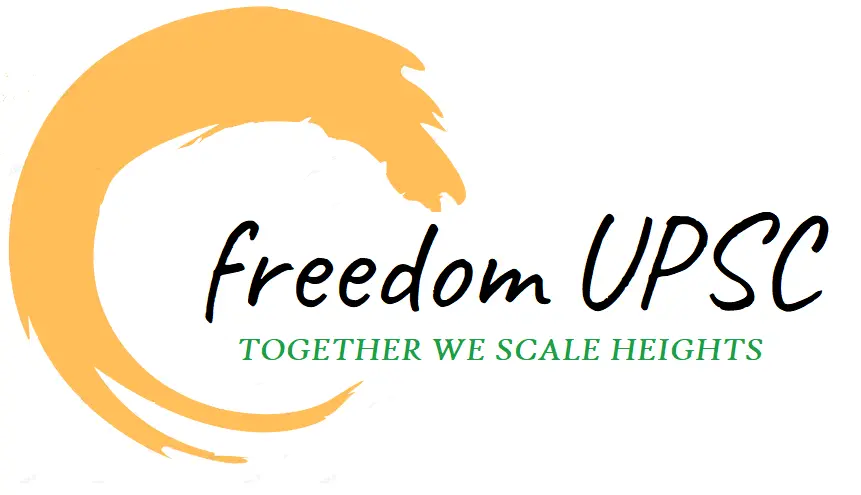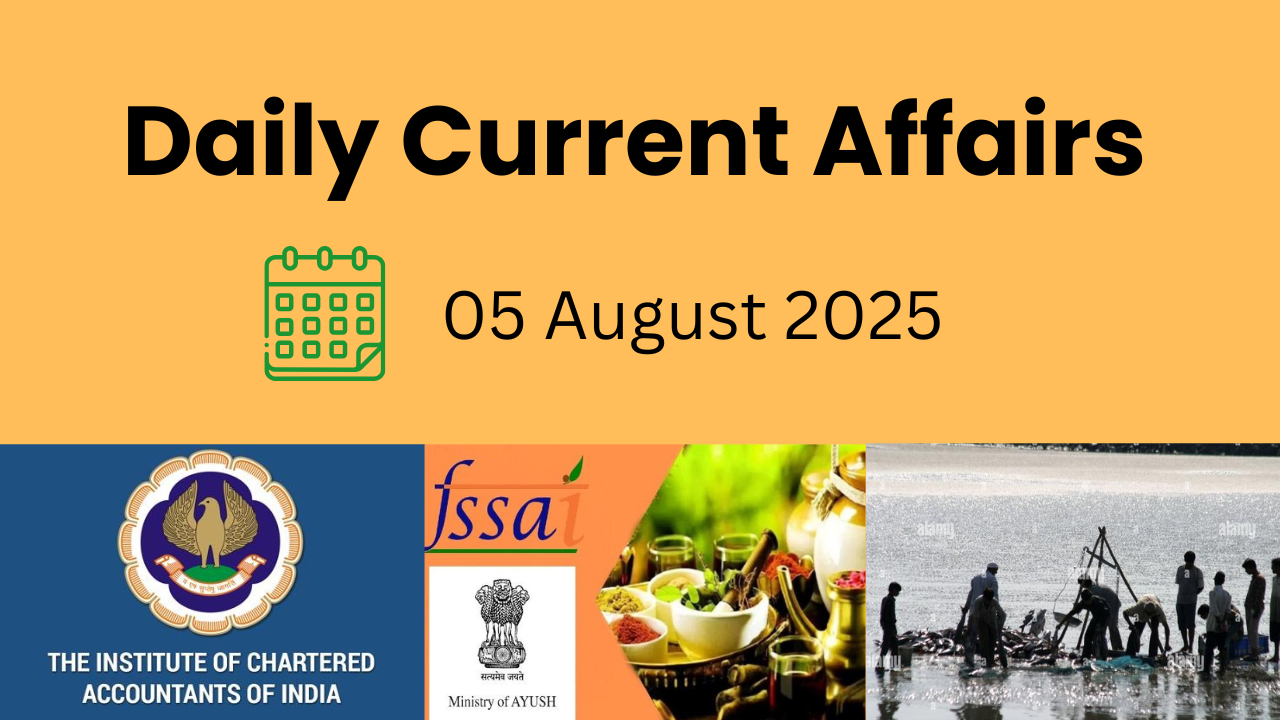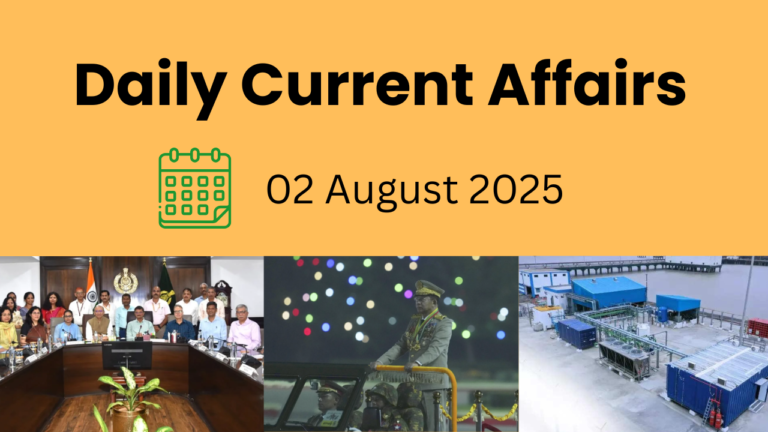1. PM Modi’s Visit to Varanasi: Key Highlights and Announcements
Context: On his recent visit to Varanasi, Uttar Pradesh, Prime Minister Narendra Modi inaugurated and laid the foundation for several key development projects aimed at boosting infrastructure, education, and cultural heritage in his parliamentary constituency. The visit reflected the government’s continued focus on transforming Varanasi into a modern spiritual and smart city, while staying rooted in its historical identity.
Varanasi, one of the oldest cities in the world and a major cultural and religious hub, has been a model for urban transformation under initiatives like the Smart Cities Mission and Swachh Bharat Abhiyan. This visit by PM Modi marks a continuation of that vision.
PM Modi inaugurated projects worth over ₹13,000 crore, covering sectors like:
- Infrastructure:
- New road connectivity projects for smoother traffic in and around Varanasi.
- Launch of modern parking facilities to reduce congestion in busy areas.
- Railways:
- Inauguration of a redeveloped Varanasi Junction railway station, with improved passenger amenities.
- Foundation stone for rail overbridges to improve safety and ease movement.
- Education & Health:
- Launch of new educational institutes, including a research centre for Ayurveda and Indian knowledge systems.
- Strengthening of rural health infrastructure with upgraded health centres and wellness clinics.
- Tourism & Spiritual Circuits:
- Restoration and beautification of ghats, temples, and heritage sites.
- Launch of guided tourism circuits connecting major spiritual landmarks in the city.
Focus on Viksit Bharat @2047
- The PM linked the development works to the broader goal of building a “Viksit Bharat by 2047”, where cities like Varanasi are envisioned as centres of culture, commerce, and technology.
- Emphasis was also laid on digital governance, smart infrastructure, and public participation in making cities cleaner, greener, and safer.
Interaction with Citizens and Stakeholders
- PM Modi addressed a public gathering where he:
- Praised the people of Varanasi for their support in transforming the city.
- Urged youth to actively participate in nation-building and skill development.
- Highlighted government schemes like PM SVANidhi, PM Awas Yojana, and PM Gati Shakti, which have benefited urban and semi-urban populations.
Conclusion:
PM Modi’s visit to Varanasi was more than a ceremonial trip, it was a progress check on how one of India’s most sacred and ancient cities is adapting to the challenges of modern urban life. From new infrastructure to digital innovation and cultural preservation, the visit demonstrated the government’s intent to blend tradition with technology.
2. Eight Cooperatives Collaborate to Launch Bharat Taxi Service by December 2025
Context: In a new initiative to promote self-reliance and cooperative-driven entrepreneurship, eight prominent cooperatives in India have joined forces to launch the Bharat Taxi Service, which is set to begin operations by December 2025. This service aims to provide an affordable, rural-friendly, and cooperative-owned taxi platform that will compete with private cab aggregators, while creating employment and supporting local transport networks.
This move comes under the broader vision of ‘Sahakar se Samriddhi’ and aligns with the Centre’s focus on strengthening the cooperative sector to deliver public services, especially in semi-urban and rural areas.
Details
Eight major cooperative organizations are partnering to implement the Bharat Taxi project. While individual names are yet to be officially announced in the public domain, they are expected to include:
- Agri-marketing federations
- Transport cooperatives
- Multi-purpose cooperative societies
- Credit and rural development cooperatives
The initiative will be guided and supported by the Ministry of Cooperation, which has been actively pushing for innovative models involving cooperative participation in the economy.
About Bharat Taxi Service
- It will function similarly to current app-based cab aggregators like Ola and Uber but with a cooperative ownership model.
- Drivers will be members of the cooperative, and profits will be shared equitably instead of going to private corporations.
- The service will start in selected Tier-2 and Tier-3 cities, expanding later into rural and underserved areas.
Key Goals and Features
- Provide affordable and accessible taxi services across India.
- Empower local youth and create cooperative-based employment opportunities.
- Avoid surge pricing and offer transparent fare structures.
- Generate a sustainable revenue model for rural transport cooperatives.
Policy and Economic Significance
- Part of the government’s effort to revive and modernize the cooperative movement in India.
- Encourages inclusive growth by allowing communities to participate in service delivery.
- Will help formalize the unorganized transport sector in rural and semi-urban regions.
- Reflects the goals of:
- Digital India – through tech-enabled services
- Aatmanirbhar Bharat – by localizing economic control
- Skill India – through training programs for drivers and service operators
Conclusion: The upcoming Bharat Taxi Service is not just another transportation platform; it is a symbol of cooperative innovation, aiming to decentralize control and return value to the actual service providers—the drivers and communities. It promises to make transport services more inclusive, transparent, and locally owned, especially in areas where traditional app-based services have limited reach.
This initiative could set a precedent for community-owned digital platforms, encouraging similar cooperative ventures in sectors like delivery, logistics, and agriculture. If implemented successfully, it will be a milestone in India’s journey towards people-led economic empowerment.
3. FSSAI Notifies List of Ayurveda Aahara Products Under Category A
Context: The Food Safety and Standards Authority of India (FSSAI) has released the first-ever definitive list of products classified as ‘Ayurveda Aahara’ under Category A. This is a major step toward bringing clarity, regulation, and trust to the fast-growing segment of Ayurveda-based foods in India.The move is aimed at ensuring that Ayurveda-based dietary items are clearly distinguished from regular foods or supplements, and are regulated for safety, purity, and intended use. This decision comes in response to the growing popularity of traditional wellness-based diets and the need for formal classification under India’s food safety laws.
Details
‘Ayurveda Aahara’ refers to food products formulated using principles of Ayurveda, as defined under the Food Safety and Standards (Ayurveda Aahara) Regulations, 2022. These products are designed not as medicine, but as health-promoting foods that support the body based on Ayurvedic concepts like dosha balance and seasonal eating.
What Has FSSAI Released?
- FSSAI has published a definitive list of items classified under ‘Category A’ of Ayurveda Aahara products.
- This includes classical Ayurvedic formulations, herbal ingredients, and dietary combinations that have been traditionally consumed and documented in Ayurvedic texts.
Purpose of Category A
- Category A products are recognized formulations that are:
- Time-tested and mentioned in classical Ayurvedic books.
- Suitable for consumption without prescription.
- Backed by textual evidence and historical usage.
- These are distinct from Category B products, which may require further scientific evaluation or approvals.
Role of AYUSH Ministry and FSSAI
- The initiative is a result of inter-agency collaboration between the Ministry of AYUSH and FSSAI.
- The Ministry of AYUSH provided the scientific and textual backing for the products, while FSSAI developed the framework for labeling, safety, and market access.
Conclusion: The release of a standardized list of Ayurveda Aahara products under Category A is a milestone for India’s traditional food systems, blending ancient knowledge with modern safety regulations. It will benefit consumers, producers, and health-conscious individuals by ensuring that what is sold as Ayurveda-based food is genuine, safe, and effective.
This step also strengthens India’s vision of becoming a global wellness hub, where Ayurveda is not just a system of medicine, but a way of life. With clearer rules and proper oversight, Ayurveda Aahara can contribute to nutritional security, preventive health, and the expansion of India’s soft power through traditional knowledge systems.
4. 7 Centres of Excellence Recognized Under NCMM by Ministry of Mines
Context: In a strategic push to modernize India’s mining sector, the Ministry of Mines has officially recognized seven Centres of Excellence (CoEs) to operate under the National Centre for Mineral Targeting (NCMM). This move aims to strengthen research, innovation, and mineral exploration capabilities in India and support the country’s vision of becoming self-reliant in critical mineral resources.
The recognition of these institutions is a part of India’s broader plan to promote technology-driven exploration, reduce import dependency, and make the mining sector more sustainable and globally competitive.
Details
The National Centre for Mineral Targeting (NCMM) is a research-based body set up under the Ministry of Mines. It was established to coordinate advanced exploration, data analysis, and mineral discovery in India. NCMM acts as a central hub that brings together academia, geoscientists, and industry for high-quality mineral research.
What are Centres of Excellence (CoEs)?
- CoEs are institutions recognized for their expertise in geology, mining, GIS, AI in exploration, and mineral analytics.
- These centres will now work with NCMM on specific research projects, mineral mapping, and technology development.
List of 7 Recognized CoEs
While the detailed list is released officially by the Ministry of Mines, these CoEs generally include:
- Premier IITs and NITs (Indian Institutes of Technology / National Institutes of Technology)
- Geological and Mining Research Institutions
- Autonomous R&D bodies working in minerals, GIS mapping, or remote sensing
Objectives of These CoEs
- Identify deep-seated and critical minerals like lithium, rare earth elements, graphite, and cobalt.
- Promote use of AI, satellite imaging, and big data in mineral exploration.
- Support policy recommendations, sustainable mining practices, and mineral resource management.
- Create trained human resources through specialized academic and industrial collaboration.
Conclusion
By recognizing seven Centres of Excellence under NCMM, the Ministry of Mines has taken a decisive step toward scientific, data-driven mineral exploration. These collaborations will foster innovation, accelerate mineral discovery, and improve the efficiency of resource utilization.
The initiative is expected to position India as a leader in mineral intelligence and exploration technologies, while also aligning with environmental safeguards and sustainability goals. As India looks to fuel its industrial and green energy transition, such research-backed programs will form the backbone of long-term resource security and economic growth.
5. India Sees 2% Drop in Marine Fish Catch in 2024; Gujarat Tops in Total Landings
Context: India witnessed a 2% decline in its total marine fish catch in the year 2024, according to the latest data released by marine research authorities. This slight but notable drop is attributed to factors such as climate change, rising sea temperatures, overfishing, and reduced breeding cycles.
Despite the decline at the national level, Gujarat emerged as the top-performing state, contributing the highest share to India’s total marine fish landings. This update is important not just for fisheries and marine economy stakeholders, but also for policymakers aiming to promote sustainable fishing practices.
Details:
It refers to the total quantity of fish caught from the sea, not from inland or freshwater sources. India’s marine fisheries sector plays a major role in food security, employment, and export earnings.
Key Highlights of the Report
- Overall marine fish catch in 2024: Dropped by 2% compared to 2023.
- Gujarat: Ranked first among all states in terms of total marine fish landings.
- Other major contributors: Tamil Nadu, Maharashtra, and Andhra Pradesh followed Gujarat.
- The decline was mostly seen in:
- Pelagic fish species like mackerel and sardines.
- Coastal areas affected by ocean warming and rough monsoon conditions.
Reasons Behind the Decline
- Climate Variability:
- Changing sea surface temperatures affect fish migration and breeding.
- Overfishing:
- Excessive fishing activities during peak spawning seasons.
- Pollution and Coastal Development:
- Habitat loss due to coastal construction, plastic waste, and oil spills.
- Inadequate Rest Periods:
- Ignoring fishing bans during monsoons has affected regeneration of fish stocks.
Why Gujarat Leads
- Gujarat has:
- A long coastline of over 1,600 km.
- Advanced fishing infrastructure including harbours and cold chain facilities.
- A strong network of mechanized and motorized fishing boats.
- The state also supports marine exports and has strong linkages with seafood processing industries.
Conclusion
The 2% drop in India’s marine fish catch in 2024 is a wake-up call about the growing pressure on coastal and marine ecosystems. While states like Gujarat continue to dominate in terms of fish production, the overall sustainability of marine resources needs urgent attention.
Long-term planning involving scientific inputs, ecosystem-based management, and stakeholder participation is key to ensuring that the blue economy remains both productive and sustainable.
6. ICAI Signs MoU with IAGES to Improve Accreditation in India’s Gold Industry
Context: In a significant step towards improving transparency and professional standards in India’s gold and jewellery sector, the Institute of Chartered Accountants of India (ICAI) has signed a Memorandum of Understanding (MoU) with the Indian Association of Gold Economists and Scientists (IAGES).
This partnership aims to strengthen the accreditation framework, promote ethical business practices, and bring more formalization to the gold industry, which has traditionally operated in a semi-regulated environment.
Details
The Institute of Chartered Accountants of India (ICAI) is a statutory body established under the Chartered Accountants Act, 1949. It regulates the accounting and auditing profession in India and plays an advisory role in improving financial reporting and compliance across sectors.
Who is IAGES?
- The Indian Association of Gold Economists and Scientists (IAGES) is an industry body involved in gold policy research, certification standards, and sectoral innovation.
- It aims to improve governance, transparency, and economic efficiency in the gold trade and allied industries.
What Does the MoU Aim to Achieve?
- The ICAI-IAGES MoU focuses on:
- Establishing a structured accreditation framework for gold businesses and professionals.
- Encouraging the use of scientific methods and auditing practices in gold valuation and trade.
- Conducting joint training programs, research, and industry consultations.
- Promoting ethical practices and financial literacy in the sector.
Why This is Important for India’s Gold Sector
- India is one of the largest consumers of gold globally, but much of the trade is still informal or lacks standardized accreditation.
- This leads to:
- Tax evasion
- Lack of consumer trust
- Difficulties in integrating with formal financial systems
- Formal accreditation will help bring credibility and traceability, which are essential for gold monetization schemes, digital gold trading, and export competitiveness.
Alignment with Government Initiatives
- The move supports:
- Digital India – through better compliance and e-certification
- Make in India – by uplifting standards for jewellery exports
- Atmanirbhar Bharat – by promoting a regulated and self-reliant gold economy
- Financial Inclusion – enabling safer and transparent gold-backed loans
Conclusion:
The MoU between ICAI and IAGES is a timely and strategic step towards cleaning up and modernizing India’s gold industry. By introducing accreditation systems, professional audits, and ethical standards, the partnership will bring greater confidence to both domestic and international stakeholders.
It will also encourage more gold businesses—especially small and medium players—to become part of the formal economy, helping improve tax compliance, quality assurance, and long-term consumer trust. In a country where gold is not just a commodity but a cultural asset, such regulatory partnerships are essential for creating a sustainable and credible gold ecosystem.




